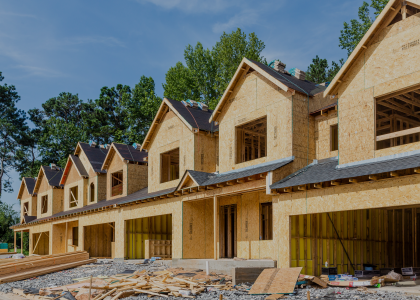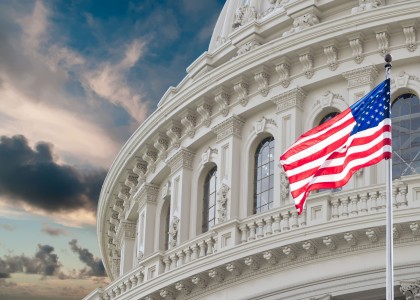10thAnniversary Energy Efficiency Scorecard Shows VT, RI, CT, NY Rounding Out Top 5; MO, ME, and MI are 3 Most Improved States; LA, KS, SD, WY, and ND at Bottom and Most in Need of Improvement
Washington, DC—In a dramatic photo finish, California and Massachusetts both won the top spot in the 10th edition of the 2016 State Energy Efficiency Scorecard published by the ACEEE. This marks Massachusetts’s sixth consecutive year in first place, but the first time it shared the Spotlight with the Golden State, which last held the title in 2010. The balance of the top 10 consisted of Vermont (#3), Rhode Island (#4), Connecticut and New York (tied for #5), Oregon (#7), Washington state (#8), Maryland (#9), and Minnesota (#10).
The three most improved states are Missouri, Maine, and Michigan. The ACEEE State Scorecard identifies the following states as most in need of improvement: Louisiana (#47); Kansas (#48); South Dakota (#49), Wyoming (#50), and North Dakota (#51).
Steven Nadel, executive director, ACEEE, said: “Governors, legislators, regulators, businesses, and citizens are increasingly recognizing that energy efficiency is a critical state resource that keeps money in the local economy. The past year has been an exciting time for energy efficiency, with several states strengthening efficiency policies and programs. States are spurring efficiency investment through advancements in building energy codes, transportation planning, and leading by example in their own facilities and fleets. These investments reap large benefits, giving businesses, governments, and consumers more control over how and when they use energy.”
Jay Nixon, governor of Missouri, said: “Missouri is proud to be among the most improved states for energy efficiency this year. Our state energy plan recognizes the vital role that energy efficiency plays in helping Missouri citizens and businesses manage their budgets. Going forward, Missouri will continue to work towards a more sustainable and secure energy future and create next-generation jobs in this fast-growing industry.”
Kathleen Hogan, deputy assistant secretary for energy efficiency, US Department of Energy (DOE), said: “States oversee many policies and programs that unlock efficiency’s many benefits—economic competitiveness, more jobs, an improved environment. The Scorecard shows states are diving deeper, pushing further, innovating, and making tremendous progress on efficiency.”
Andrew McAllister, commissioner, California Energy Commission, said: “To reduce greenhouse gas emissions from building energy consumption, California’s highest priority is energy efficiency. California continues to prove that using energy wisely is good for both the economy and the environment. A robust and growing clean energy economy enables real people to understand and choose between attractive options that improve their lives and achieve deep energy savings. With the right public-private cooperation and partnerships, we expect even greater things ahead.”
Judith Judson, commissioner of the Department of Energy Resources, Commonwealth of Massachusetts, said: “The Baker-Polito Administration is committed to supporting energy efficiency policies, which are consistently proven to be the most cost effective way to reduce ratepayer costs and lower emissions. By working with our utility partners, the Commonwealth’s ratepayers continue to realize billions of dollars in benefits from our nation-leading energy efficiency policies and programs.”
OTHER KEY FINDINGS
The 2016 ACEEE State Scorecard zeroes in on six policy areas in which states pursue energy efficiency: utility and public benefits programs and policies; transportation policies; building energy codes; combined heat and power (CHP) policies; state government–led initiatives around energy efficiency; and appliance and equipment standards. Here are the leaders in each category:
- Rhode Island, Massachusetts, and Vermont are the top states in utility-sector energy efficiency programs and policies. A total of 26 states enforce and adequately fund energy savings targets to drive investments in utility-sector energy efficiency programs. The states with the most ambitious targets include Massachusetts, Rhode Island, and Arizona. New Hampshire is the most recent state to adopt energy savings goals for its utilities.
- California, Massachusetts, and New York are out in front on energy-efficient transportation policies. California’s requirements for reducing greenhouse gas emissions have prompted several strategies for smart growth. Massachusetts promoted smart growth development in cities and municipalities through state-delivered financial incentives. New York is one of the few states in the nation to have a vehicle-miles-traveled reduction target.
- Several states—including Massachusetts, New York, Texas, Vermont, and Washington—join California and Illinois in achieving top scores for building energy codes and compliance this year. A growing number of states have taken major steps toward the adoption of the most recent DOE-certified codes for both residential and commercial new construction. These include Alabama, Delaware, Hawaii, Illinois, Maryland, Massachusetts, Michigan, New York, New Jersey, Texas, Utah, Vermont, and Washington.
- Massachusetts, Maryland, and California score highest for their combined heat and power policies.
- California, Washington, Colorado, Connecticut, Massachusetts, Minnesota, New York, and Tennessee set the pace in state government-focused initiatives.
- California continues to lead the nation in setting appliance standards, having adopted standards for more than 100 products. Within the past year, it became the first state to adopt standards for LEDs and small-diameter directional lamps, and it also updated its standards for HVAC air filters, fluorescent dimming ballasts, and heat pump water chilling packages.
States continue to be standouts in other regards when it comes to energy efficiency. New York posted an increase in electricity savings. Earlier in the year, the Empire State also completed major updates to its state building energy codes. Utah and Tennessee made similar gains thanks to updates to state building energy codes this year. Arkansas committed to extend its energy efficiency goals and gained points for state government-led policies, having recently closed its first commercial PACE project.
Weston Berg, research analyst and lead State Scorecard author, ACEEE, said: “Over the last 10 years, we have seen that many if not most innovative policies and programs that promote energy efficiency originate at the state level. As a cost-effective compliance option, efficiency is a valuable addition to any state’s policy toolkit, saving money, driving investment across all sectors of the economy, creating jobs, and reducing the environmental impact of energy use.”
METHODOLOGY
ACEEE allocated 50 possible points to states among policy areas: 20 points to utility and public benefits program and policy metrics; 10 points for transportation policies and programs; seven points to building energy codes; four points to improved CHP policies; seven points for state government-led initiatives; and two points going to state appliance and equipment standards.
Policy information for The 2016 State Energy Efficiency Scorecard reflects the state of play on energy efficiency as of the end of July 2016.
MEDIA CONTACT: Pat Mitchell, (703) 276-3266 or pmitchell@hastingsgroup.com.
EDITOR’S NOTE: An electronic copy of the ACEEE 2016 State Energy Efficiency Scorecard report and a high-resolution image of the ACEEE logo will be available upon request. A streaming audio replay of the news event will be available on the web at http://aceee.org/state-policy/scorecard as of 5:00 p.m. EDT on Tuesday, September 27, 2016.
The American Council for an Energy-Efficient Economy acts as a catalyst to advance energy efficiency policies, programs, technologies, investments, and behaviors.


